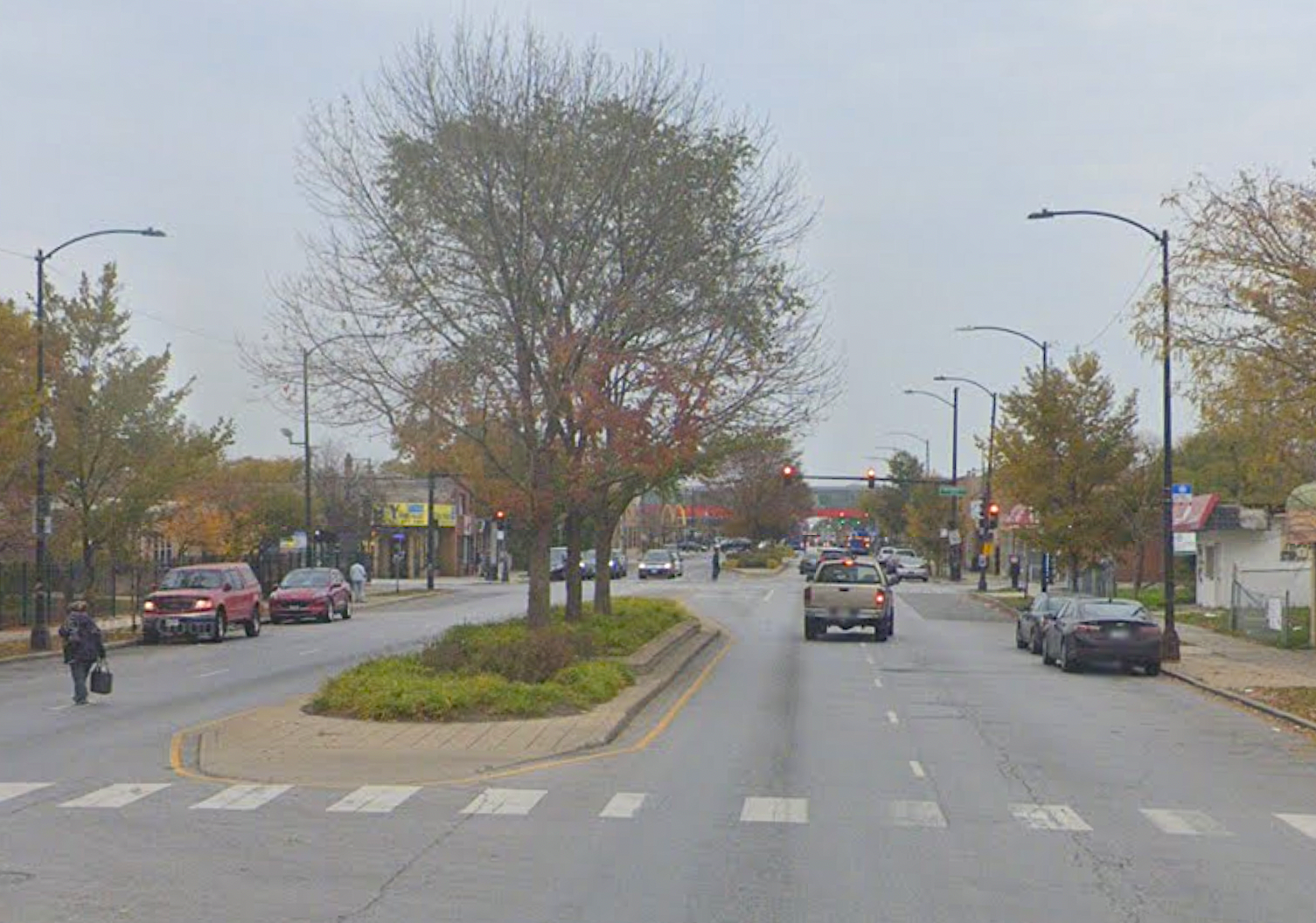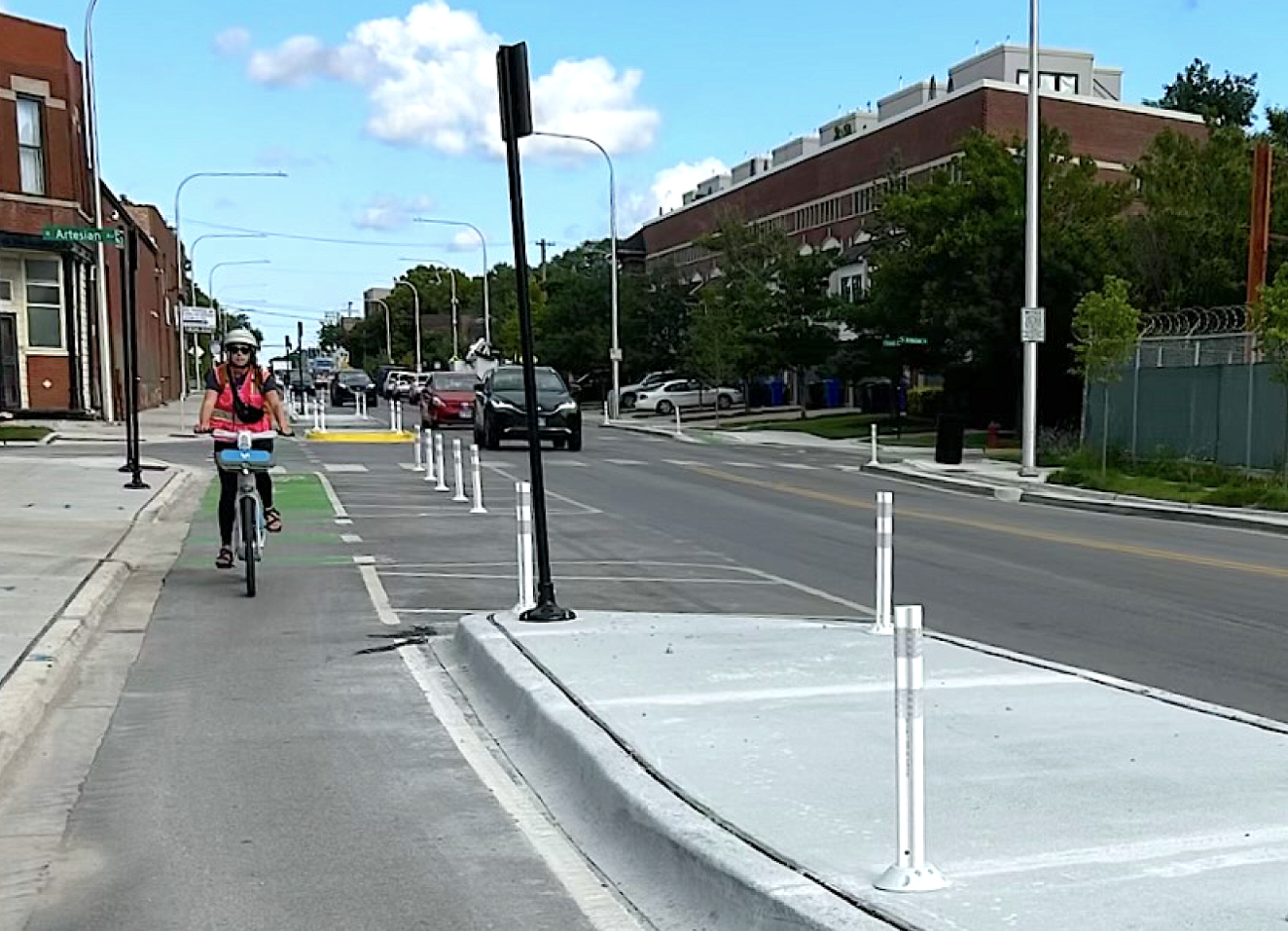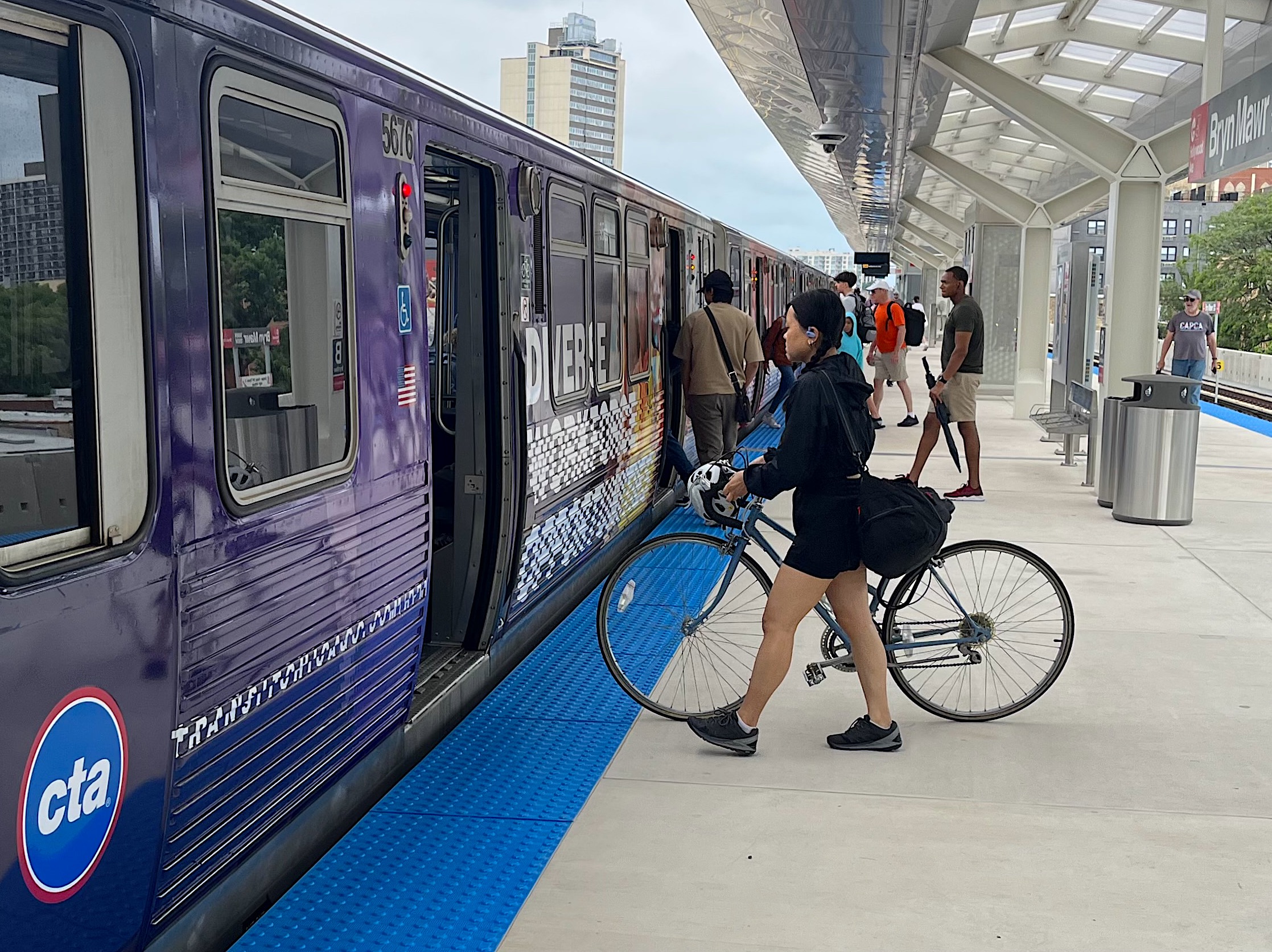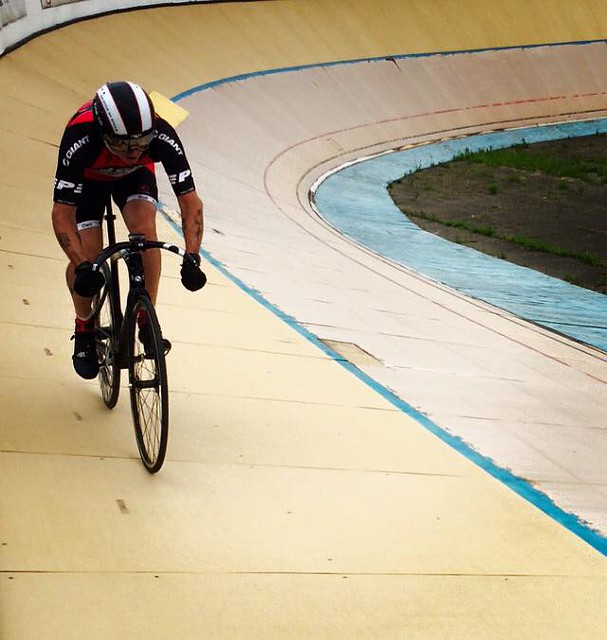
The South Chicago Velodrome Association recently announced that the city’s only bike racing track is probably going to lose its lease and cease operations. According to bike shop owner Marcus Moore, who has spearheaded recent efforts to keep the facility in the city, there’s still a glimmer of hope that the track can be saved. But this could only happen if landlord U.S. Steel agrees to relax terms of the lease, or else if opportunities arise to pay off the tens of thousands of dollars still owed to the velodrome’s manufacturer and/or find a new location for the portable facility.
Built in 2011 at 8615 South Burley on U.S. Steel’s former South Works site, the track supposed to be the first step in a grand plan for the South Chicago Velo Campus, brainstormed by luxury pet accessory mogul Emanuele Bianchi. After hosting races for adults, plus education programs for youth from the surrounding low-to-middle-income communities for a few years, Bianchi and his partners gave up on the project in September 2014, citing a lack of support from the Chicago bike community.
But Marcus Moore, owner of Yojimbo’s Garage bike store, and other cycling enthusiasts stepped in to stop the track from being repossessed by its manufacturer, V-Worldwide, based near Detroit. The advocates were able to raise about $30,000 out of the $110,000 owed to the company through crowdfunding and persuaded the owner to let them hold onto the track while they continued to fundraise.
The real estate company McCaffery Interests, which was managing the South Works site for the steel company and working with them on a plan to redevelop the land as “Lakeside,” agreed to let the new track boosters use the land rent-free. However U.S. Steele requires a whopping $15 million in aggregate coverage, while a typical track only needs $2-3 million in coverage, according to Moore.
As a result the velodrome association has had to pay about $2,500 a month in insurance premiums and they’ve struggled to keep up with this expense. While they have paid V-Worldwide a total of $39,000 for the facility, they’re now many months behind in payment and have periodically had to put of calls for donations to cover the insurance bill.
Moore, who says he’s needed to scale back his own involvement with the velodrome in order to focus on running his shop, says it looks like the boosters’ track racing dreams may have come a dead end. “It’s not totally conclusive yet, but technically our land lease and insurance expired Sunday night,” he explained.
U.S. Steel’s partnership with McCaffery collapsed last February, and the steel company is now looking to sell the land rather than redevelop it. As such, they’re only willing to renew the track’s lease until October 31, and they’re still not willing to lower the insurance requirements, Moore says.
Continuing the existing insurance would require a $6,091 payment up front plus monthly payments of about $2,500, but that’s a moot point because the current insurer isn’t interested in renewing the policy for only a few months, according to Moore. He added that it would be difficult to find new $15 million short-term coverage. Moore says he’s been negotiating with the steel company over the insurance issue recently, but so far they haven’t budged.
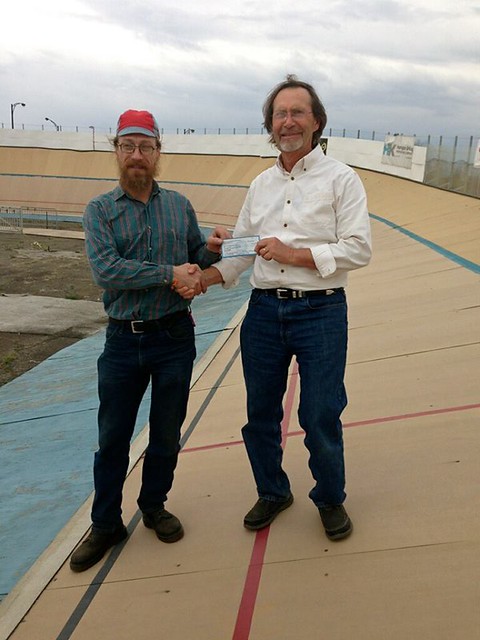
The recent update from the velodrome association noted that last weekend would likely be the last chance to ride the track before it’s closed for good. Volunteers kept the facility open from Friday to Sunday, and somewhere under 20 people showed up to pedal a few laps, with one racer doing a full workout.
However, this Thursday the Intelligentsia Cup’s South Chicago bike race will take place partly on streets bordering the track site. Moore hopes an agreement can be worked out so that the track can be open for casual riding and demonstrations by racers during the on-street event. “That might create some interest and open the door a little for renegotiating with U.S. Steel,” he says.
Even if the track boosters succeed in renewing the lease, there’s still the matter of the $79,000 still owed to V-Worldwide. “The track owner certainly doesn’t like that he hasn’t gotten a payment in months,” Moore acknowledges. “But we’re still in communications and he’s been understanding.”
Lately fundraising has been mostly limited to trying to keep up with the insurance payments and electric bills for the track. Moore says he hoped another volunteer would step forward to line up big-time corporate sponsorship money, but that never materialized, so all sponsorship has been from local businesses, organizations and individuals.
So far there aren’t any promising leads on alternative locations for the portable track within the city. While Chicago Park District land seems like a logical choice and the track volunteers have reached out to the park district, there’s been no positive movement in that direction.
A couple months ago when park district CEO Michael Kelly was on WBEZ’s Morning Edition show, Moore called in to ask if a partnership might be possible, but Kelly implied the agency wasn’t interested. “Everybody’s budget is strained right now, so to take on an initiative that would cost money may be a non-starter,” Moore speculated.
If no solution emerges in the near future, Moore says he’ll try to keep the velodrome on the land as long as possible, but at some point U.S. Steel will likely give notice that the space must be vacated within 30 days. At that point V-Worldwide would be responsible for removing the track and the velodrome association would have to dismantle other structures on the property.
For those who want to help save the track, Moore says the association can use assistance with PR, including redoing their website, as well as fundraising, accounting, and legal help. In addition, the organization is still accepting donations on their GoFundMe page.
Hopefully a savior will emerge to help keep Chicago from losing this unique facility. That would truly be a shame, especially since the track has served as an educational resource for disadvantaged youth from the surrounding neighborhoods.
But Moore, like track founder Bianchi, says that a key challenge in keeping the velodrome alive has been a lack of follow-up from people who had promised to volunteer their services. “It’s ironic that it’s an election year and people are talking about how the government should be taking care of social programs,” Moore says. “We can’t even take care of our own programs that are at the root of what we’re trying to fix.”
